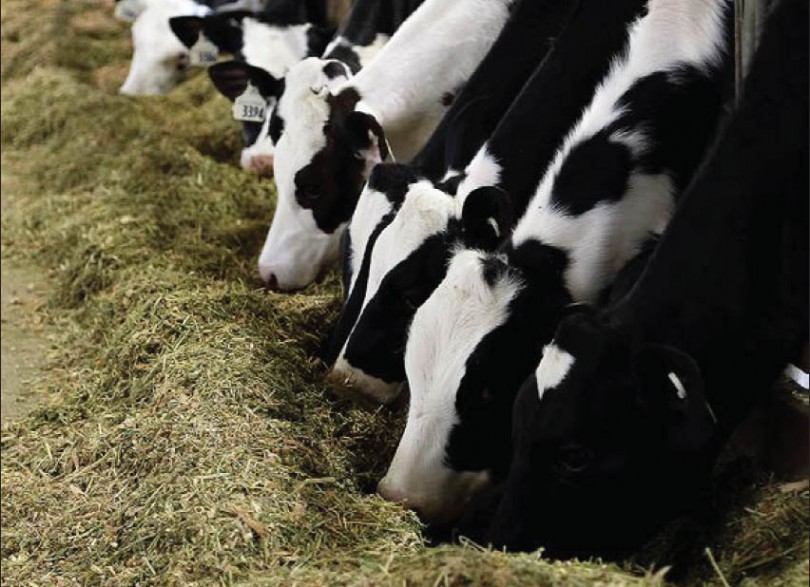Selecting the correct hybrid for silage is one of the most important management decisions for silage programs. Depending on your priorities, you may want to choose a silage-specific or a dual-purpose hybrid, as each comes with their own advantages and considerations.
The following criteria can help growers select the correct hybrids for maximum corn silage production:
- Choose hybrids that are adapted for the region in which they will be grown
- Ensure hybrids will respond positively from the operation’s cultural practices
- Select hybrids that are several days fuller maturity than those adapted for grain production (approx. 200 CHU’s)
- Good silage hybrids have a high grain to stover ratio
- Good silage hybrids possess the following traits:
- High Forage Yields
- High Digestibility
- Low Fiber Levels
- High Grain Yields
To fully unlock the potential of your silage crop it is best to get an understanding of which hybrids perform the best in your area. It is important for silage producers to grow two or three hybrids to evaluate product performance and to ensure harvest is done at the proper timing (65% whole plant moisture).
Once a producer understands which characteristics they prefer in a silage hybrid they should review their selections yearly to continue to evaluate new varieties on the market.
As mentioned above, silage harvest timing is crucial for optimal yields. Silage corn is harvested between 65% and 70% whole plant moisture. The reason for that is during this stage, crude protein (CP), dry matter yields, neutral detergent fibre (NDF) and digestibility are at optimal levels.
Silage-specific
PRIDE Effective Digestible Fibre (EDF) hybrids offer the advantage of high digestibility and palatability for improved feeding efficiency. Silage-specific hybrids have a unique set of characteristics which include:
- Wide harvest window (slow whole plant dry down)
- Soft starch filled flint kernels
- Large plant structure with more leaves
- High digestibility
Dual-purpose
When considering a dual-purpose (DP) hybrid for silage, a producer must fully understand the potential of this option. DP hybrids possess superior energy and silage quality, as well as it has the flexibility to be used as a grain or a high moisture hybrid depending on operational needs. Just as silage specific hybrids, dual purpose hybrids also have a certain set of unique characteristics, these characteristics include:
- Good agronomics
- Drought tolerance
- Disease protection
- Standability
- Harvest options
- Fill the bunk first and combine the rest
- High grain production potential
Dual-purpose hybrids are often an attractive option for producers looking for flexibility, as mentioned above.
However, it must be understood that dual purpose hybrids do not have as long of a silage harvest
window. For this reason, producers must be monitoring whole plant moisture closley later in the season to ensure the proper harvest moisture is achieved (65% whole plant).
Managing for corn silage quality
If you are producing feed for cattle with high nutritional requirements (such as for production dairy cows), and using dual-purpose hybrids, you should select your best cornfields for silage. Grain corn can more easily be replaced than high quality silage. It is difficult to balance rations and achieve desired milk production out of cows when using poor quality corn silage.
Best practices at harvest
Generally, the best time to harvest is when whole-plant moisture content is between 62% and 72% (28%-38% DM). Corn silage preserved between 30% and 38% DM (62% to 70% moisture) generally provides good silage fermentation and animal performance. Once the target milk stage is approaching and whole-plant % DM is determined, an average drydown rate of 0.5% per day can be used to estimate the number of days until harvest.
Ready to choose your hybrid?
There is still time to purchase PRIDE Seeds varieties, distributed through the CANTERRA SEEDS retail channel across Western Canada. Use our Seed Locator Tool to find the retailer nearest to you carrying PRIDE Seeds corn.
Definitions:
Neutral Detergent Fibre (NDF): Percentage of cell wall material forage; cellulose, hemicellulose, lignin, cutin and unavailable protein.
Target value: 35-55%
Consider this: NDF Values will generally increase with low grain silage, stress, or immaturity. NDF is an inverse predictor of intake (higher NDF = lower intake). Lower NDF numbers are desirable.
Dry Matter (DM): Dry matter is the moisture-free content of the sample. Because moisture dilutes the concentration of nutrients but does not have a major influence on intake, it is important to consistently evaluate rations on a dry-matter basis.
Consider this: Excessive or inadequate moisture can cause spoilage & decrease the quality of silage. Too dry is often associated with reduced digestibility & energy content.
Crude Protein (CP): Crude protein measures the nitrogen content of corn silage, including both true protein and non-protein nitrogen
Consider this: Low protein may be caused by under fertilization, nitrogen losses due to rain weed competition or improper harvesting/storage.
 Alana Serhan, Market Development Agronomist (Western Prairies), started with PRIDE Seeds in 2017. Alana coordinates and maintains all corn and soybean field scale trials across Manitoba and Eastern Saskatchewan. Alana’s role also includes testing new corn and soybean varieties to help growers understand agronomically what hybrids work best for them. Agronomics are at the forefront of Alana’s passion and she enjoys working with farmers to reach greater yields. On the ground Alana helps the CANTERRA SEEDS team with timely agronomic and variety training as well as capturing and summarizing field yield data.
Alana Serhan, Market Development Agronomist (Western Prairies), started with PRIDE Seeds in 2017. Alana coordinates and maintains all corn and soybean field scale trials across Manitoba and Eastern Saskatchewan. Alana’s role also includes testing new corn and soybean varieties to help growers understand agronomically what hybrids work best for them. Agronomics are at the forefront of Alana’s passion and she enjoys working with farmers to reach greater yields. On the ground Alana helps the CANTERRA SEEDS team with timely agronomic and variety training as well as capturing and summarizing field yield data.


